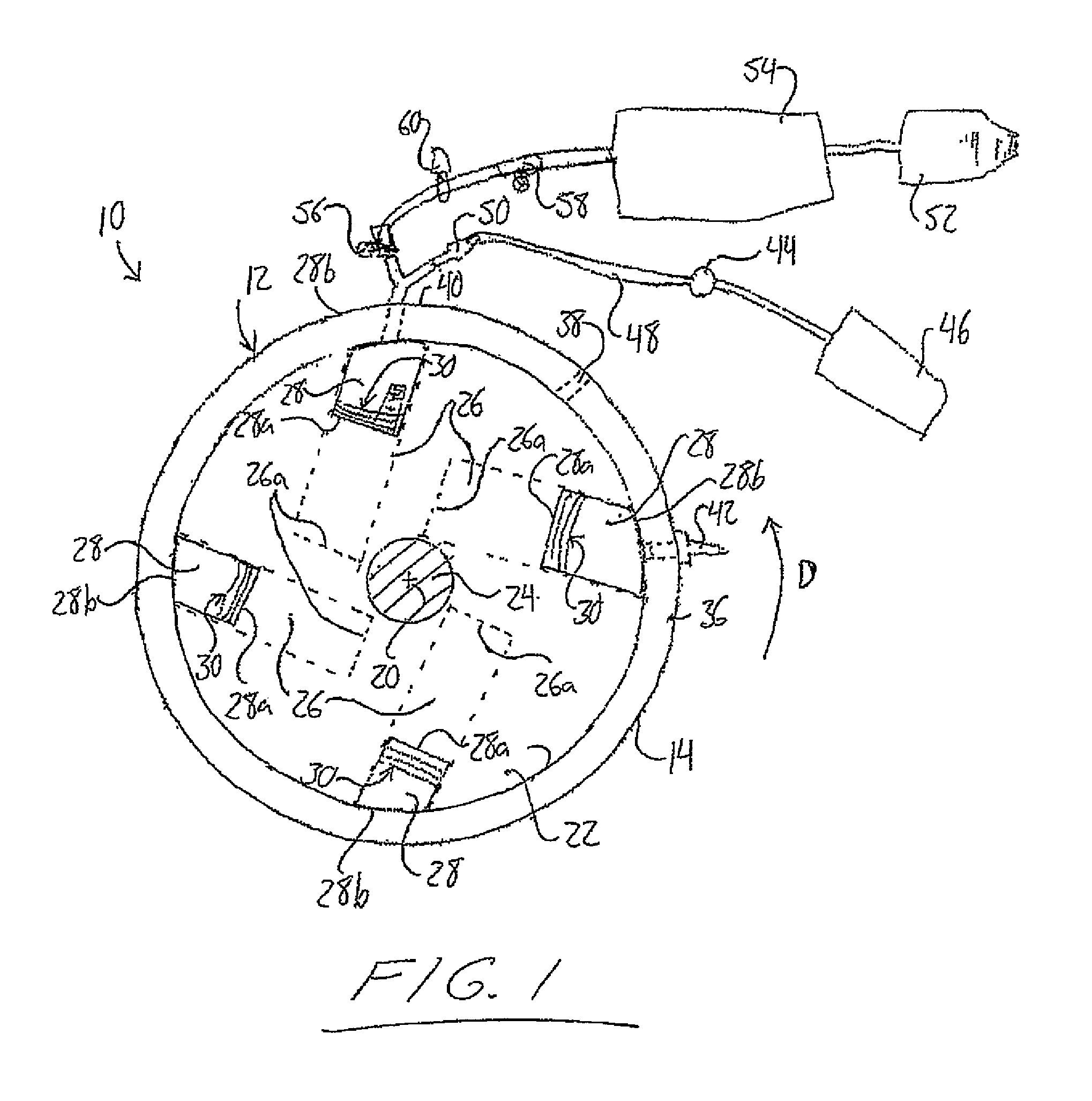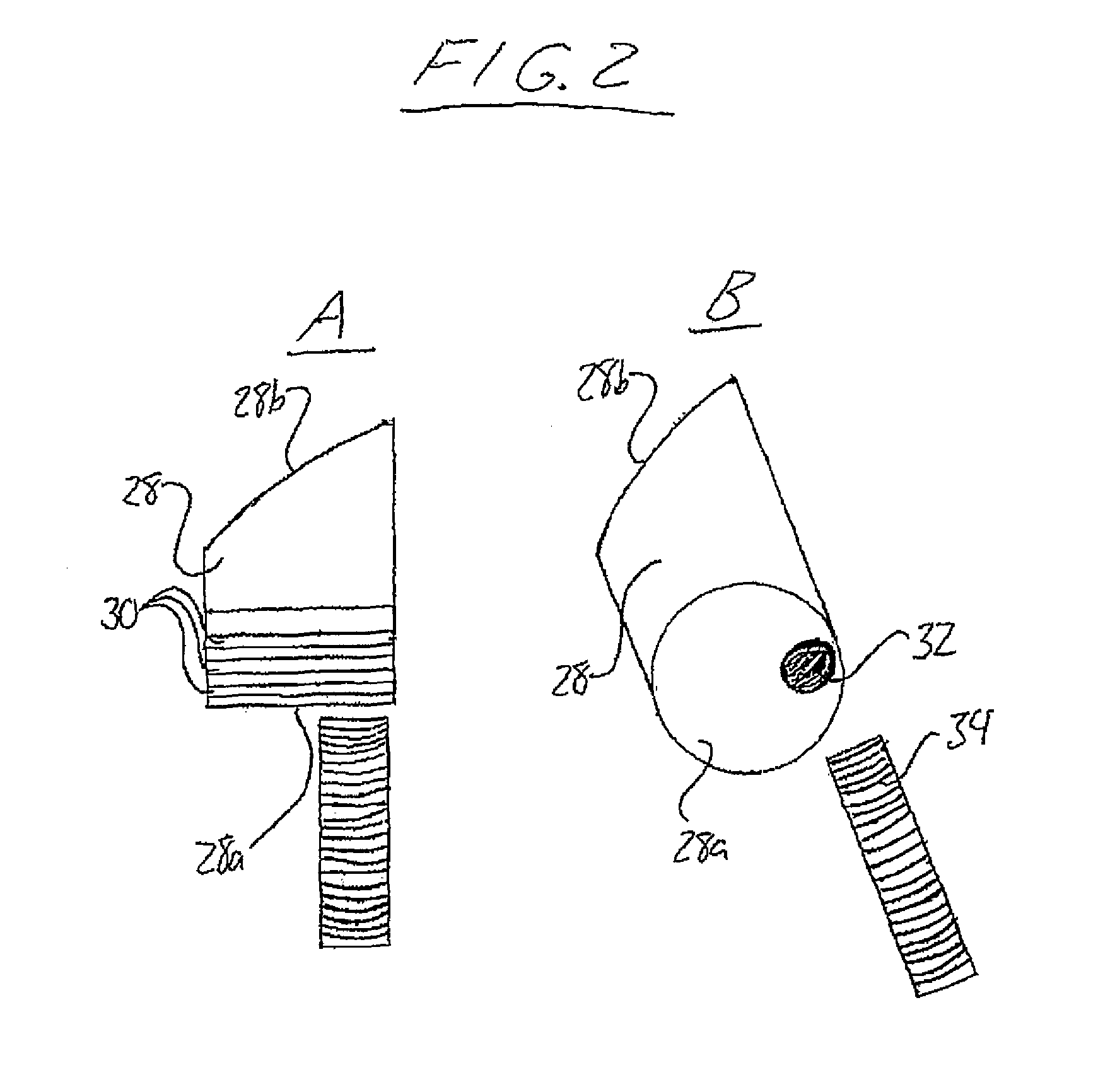Internal combustion engine and compressor or pump with rotor and piston construction, and electrical generator pneumatically driven by same
a technology of internal combustion engine and compressor or pump, which is applied in the direction of engines with rotating cylinders, mechanical equipment, transportation and packaging, etc., can solve the problems of less efficiency and more pollution
- Summary
- Abstract
- Description
- Claims
- Application Information
AI Technical Summary
Benefits of technology
Problems solved by technology
Method used
Image
Examples
first embodiment
[0096]FIG. 1 schematically shows an internal combustion engine 10 according the present invention. The engine features a stator or housing 12 in the form of a cylindrical outer peripheral wall 14 closed off at opposite ends of its cylindrical shape by circular front and rear end walls 16, 18, one of which has been removed in FIG. 1 to illustrate contents of the stator's interior and the other of which is not visible in that particular figure. The peripheral wall 14 of the stator closing concentrically about a central axis 20 forms boundaries of the stator's cylindrical interior space of circular cross section. Within the interior space of the stator 12, the engine 10 features a rotor 22 in the shape of a short cylinder of circular cross section concentric with the cylindrical peripheral wall 14 of the stator 12. The rotor 22 has a diameter slightly less than the inner diameter of the peripheral stator wall 14 and is fixed on a rotatable shaft 24 extending concentrically along the ce...
second embodiment
[0114]Applicant conceives that the igniting and injecting of fuel at the same time causing a faster rotation, with more pressure, and that when the motor is rotating at a comfortable speed, the fuel injector can be shut off, and the collection of used air in the air tank from the compressor, will keep the rotor rotating at the same rpm's. Able to pump gas or liquid fluids and provide direct rotational output, the second embodiment engine would be operable to run or turn multiple turbines, gen-heads, rotors, and other equipment. It will be appreciated that the number of cylinders in the rotor may be increased or decreased, and the angular spacing and oblique angling of the cylinders may also be varied without change to the principles under which the rotation of the rotor is driven.
third embodiment
[0115]FIG. 5 shows a third embodiment engine 200 of the present invention that features substantially the same configuration of free-sliding pistons disposed in cylindrical bores disposed in the rotor at oblique angles relative to the radii of the rotor where the bores extend into the rotor periphery. These pistons are again free to slide fully from the bottom inner end of their bores fully out to the periphery of the rotor, where the end faces of the pistons are shaped to conform to the cylindrical inner surface of the stator housing. The pistons are free sliding in that lack of any mechanical connection or link to the rotor other than the sliding interface between the piston periphery and the surrounding cylindrical wall in the respective bore in the rotor.
[0116]The third embodiment differs from the preceding embodiments in that the stator's intake port and separate spark plug port have been replaced with a single opening 202 through the cylindrical peripheral wall of the stator, ...
PUM
 Login to View More
Login to View More Abstract
Description
Claims
Application Information
 Login to View More
Login to View More - R&D
- Intellectual Property
- Life Sciences
- Materials
- Tech Scout
- Unparalleled Data Quality
- Higher Quality Content
- 60% Fewer Hallucinations
Browse by: Latest US Patents, China's latest patents, Technical Efficacy Thesaurus, Application Domain, Technology Topic, Popular Technical Reports.
© 2025 PatSnap. All rights reserved.Legal|Privacy policy|Modern Slavery Act Transparency Statement|Sitemap|About US| Contact US: help@patsnap.com



